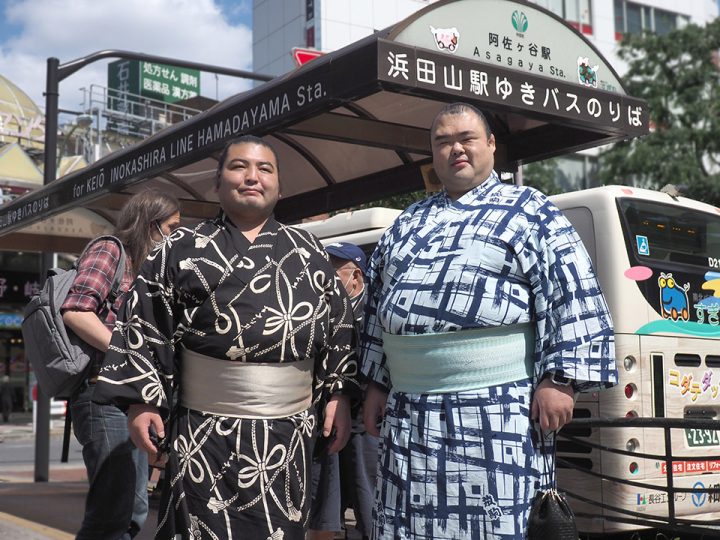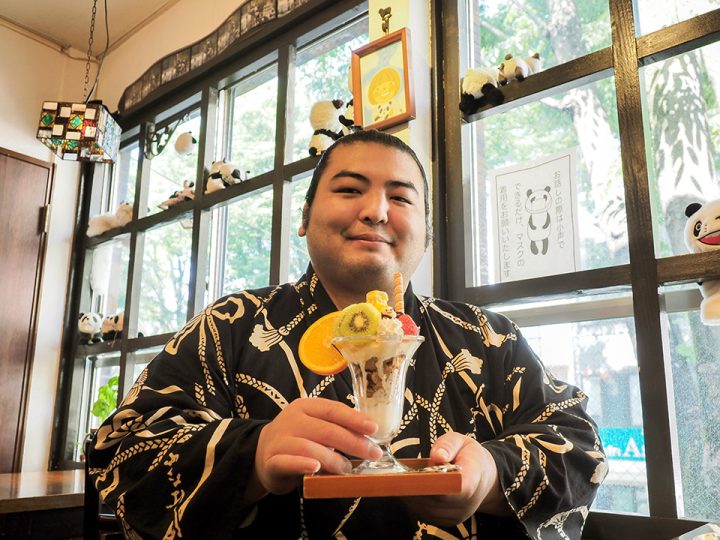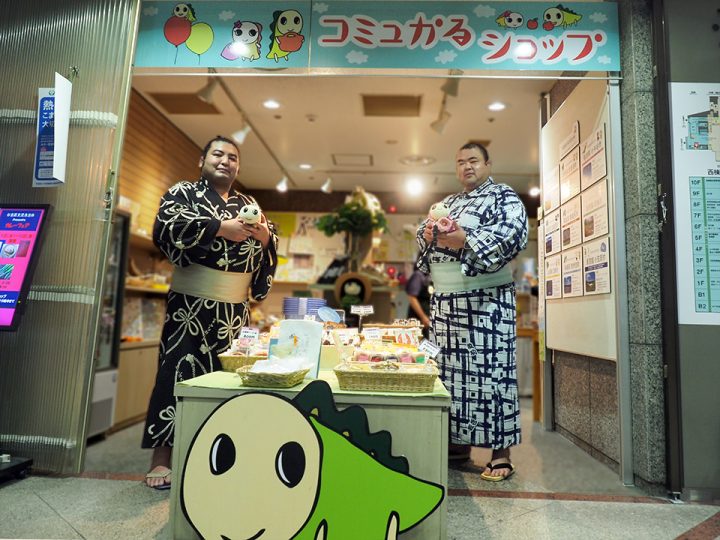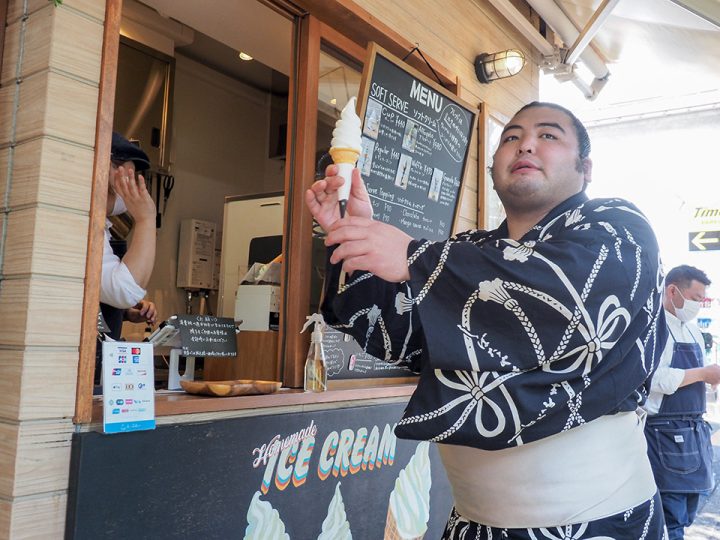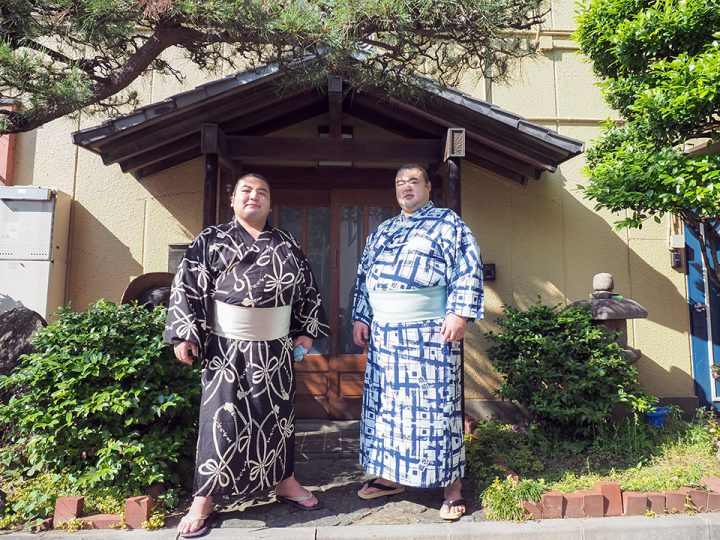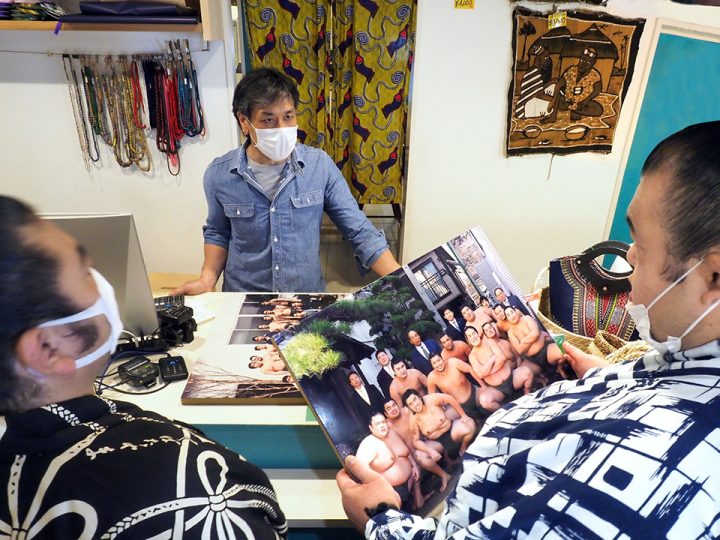- PLAN
- guides & trips
- SUGINAMI SUMO WALK (Asagaya)
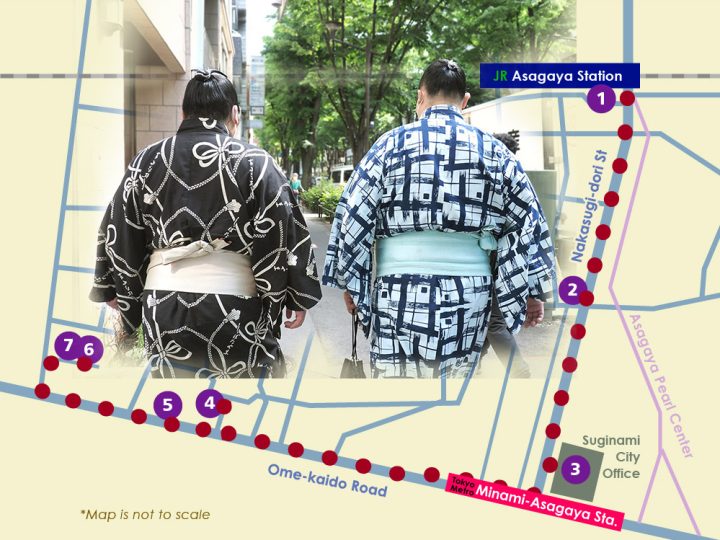
SUGINAMI SUMO WALK (Asagaya)
[published September 20, 2022]
Introduction
When thinking of Japan, many people think of sushi, anime, and various martial arts figures such as samurai, ninja, and sumo.
While samurai and ninja have essentially become martial arts of the past which only exist in anime and movies today, sumo remains culturally significant in Japan as the favorite traditional sport, as well as a spiritual and cultural practice that connects present day Japan with its long history.
Before walking with sumo wrestlers of Suginami, first we went to the Kokugikan sumo stadium in Ryogoku to get a first-hand glimpse of some matches, including with some of the wrestlers we would meet a week later.
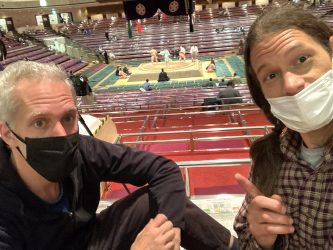
The Kokugikan starts out empty but seats fill up as the day goes on.
Sumo History From Ryogoku to Suginami
Ryogoku is the most well-known place for sumo because of the Kokugikan stadium, but the stadium burned during World War II, and the majority of the surrounding sumo practice stables were also destroyed by 1945. As a result, many of the sumo wrestlers that were living at the stables in Ryogoku escaped the area during the war and a group of them began to live at Shinseiji Temple in Umezato (South Koenji), Suginami, after being introduced by a sponsor living in Suginami. There were already sumo stables in Suginami before the war, but since the amount of sumo wrestlers in Suginami increased during and after the war, so did the number and sumo-beya, or sumo stables.
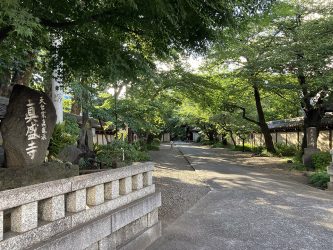
Entrance to Shinseiji Temple, Shin-Koenji
Asagaya, one of the 4 main areas in Suginami on the Chuo train line, has a lot of sumo history. The rikishi (sumo wrestlers) used to parade through the Asagaya Pearl Center shopping street to celebrate their victories. There were also some well-known sumo-beya located in the area. Two such famous sumo-beya were Hanakago-beya and Hanaregoma-beya, located in the southern part of Asagaya, the sites of which we visited on our walk with some rikishi from the area.
A Rikishi Walk Through Asagaya
In Japan, sumo tournaments take place in specific seasons throughout the year, and essentially go on tour through the main sumo stadiums in the county. The Tokyo stadium is the Kokugikan in Ryogoku, but there are sumo-beya, or sumo stables, all around the city where sumo wrestlers practice throughout the year. Asagaya in Suginami, Tokyo, has a rich sumo history with some of these sumo-beya, but you can’t really notice this history unless you know where to look. Luckily, we had 2 of the best guides we could have asked for this journey: 2 rikishi, or sumo wrestlers, from the Shibatayama-beya in Suginami, Hamadayama and Shoketsu.

Hamadayama getting his win at the Kokugikan, May 2022.
We had the pleasure of watching their winning matches at Kokugikan the week prior. Hamadayama is a younger sumo born and raised in Suginami (he is named after the Hamadayama area), and Shoketsu is a veteran sumo wrestler who used to practice at a former Asagaya sumo-beya.
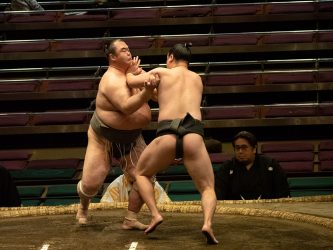
Shoketsu just before his winning match at the Kokugikan, May 2022.
Together we visited that sumo-beya location as well as some others along the way, including a few places where it would just be fun for a couple of sumo wrestlers to indulge.
- Address:
- 3 Chome-36-2 Asagayaminami, Suginami City, Tokyo
- Address:
- 3 Chome-31-14 Asagayaminami, Suginami, Tokyo
- Distance from Station:
- 4 minutes from JR Asagaya Station (South Exit)
- Phone:
- 03-3393-5077 (Japanese only)
- Open:
- 11:00am - 9:00pm/ closes at 7pm on weekends and holidays, closed on Wednesdays
- Website:
- http://pandacoffeeten.com/index.html (external link)
- Communication:
- Staff speak Japanese only; English menu available.
- no-credit-card
- Address:
- 1 Chome-15-1 Asagaya-minami, Suginami, Tokyo
- Distance from Station:
- 1 minute from Tokyo Metro Minami-Asagaya Station, 10 minutes from JR Asagaya Station, South exit
- Phone:
- 03-3312-2111 ext.2127 (Japanese only)
- Open:
- 9:00am - 4:30pm on weekdays (Closed on Saturday and Sunday)
- Website:
- https://suginami-kouryu.org/shop.html (external link)
- Communication:
- English Speaking Staff available.
- no-smoking
- no-credit-card
- disable-access
- Address:
- 3-Chome-10 Asagayaminami, Suginami City, Tokyo
- Distance from Station:
- 10 minutes on foot from JR Asagaya Station, 7 minutes on foot from Tokyo Metro Minami-Asagaya Station
- Address:
- 3 Chome-10-3 Asagayaminami, Suginami City, Tokyo
- Distance from Station:
- 10 minutes on foot from JR Asagaya Station, 7 minutes on foot from Tokyo Metro Minami-Asagaya Station
- Open:
- Weekdays 11:00am - 6:00pm, Sat, Sun & Holidays 11:00am - 6:30pm
- Website:
- https://homemilk.co.jp/softcream/ (external link)
- no-smoking
- Address:
- 3 Chome-12-7 Asagayaminami, Suginami City, Tokyo
- Distance from Station:
- 11 minutes on foot from JR Asagaya Station or Tokyo Metro Minami-Asagaya Station
- Address:
- 3 Chome-12-7 Asagayaminami, Suginami City, Tokyo
- Distance from Station:
- 11 minutes on foot from JR Asagaya Station or Tokyo Metro Minami-Asagaya Station
- Phone:
- 03-6279-9465 (Japanese only)
- Open:
- 12:00pm - 7:30pm, Closed Mondays and sometimes irregularly
- Website:
- https://www.bogolanmarket.com/ (external link)
- no-smoking








